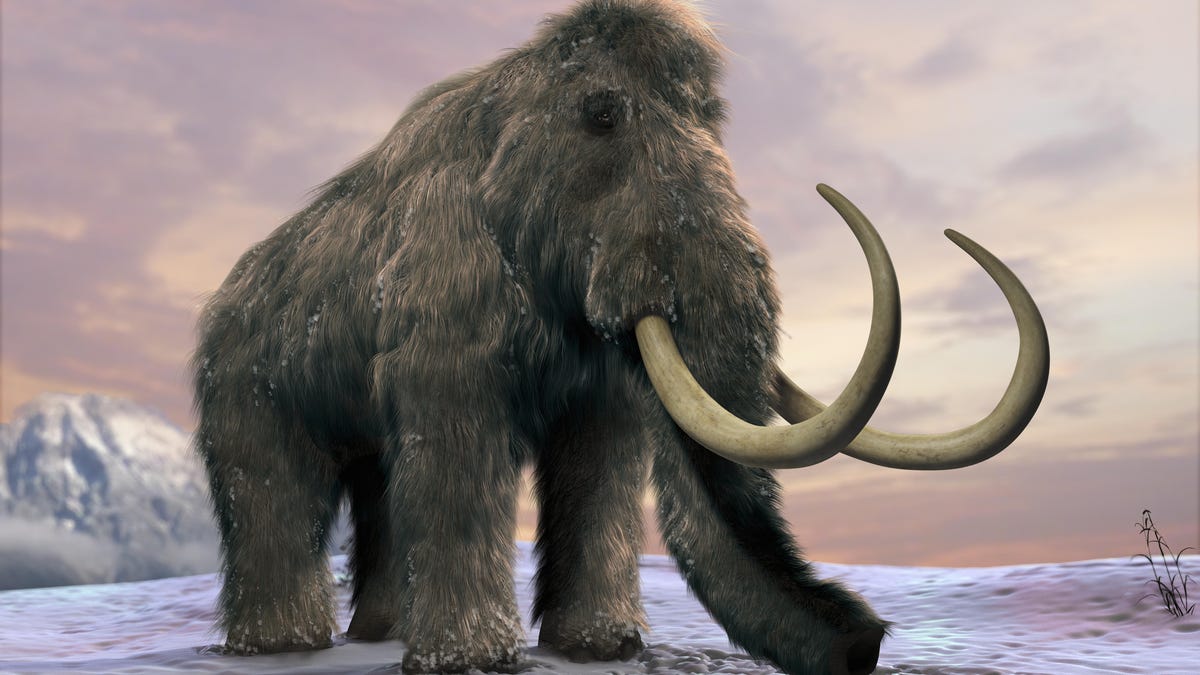The last woolly mammoths lived on a remote island, study says
They may have been killed off by isolation, extreme weather and the spread of humans.

The last woolly mammoths lived on an island in the Arctic Ocean and died 4,000 years ago, a study finds.
The last woolly mammoths lived on Wrangel Island in the Arctic Ocean and survived centuries longer than their mainland counterparts, a recent study found. The mammals had been separated from other mammoths living across the Northern Hemisphere by rising sea levels resulting from global warming beginning 15,000 years ago, according to a team of researchers from Finland, Germany and Russia.
The woolly mammoth has long fascinated scientists and some even think we might be able to bring the species back from the dead. But there's still a lot we don't know about the beastly pachyderms.
In the new research, published in the journal Quaternary Science Reviews, researchers studied the isotope compositions of carbon, nitrogen, sulfur and strontium in a set of mammoth bones and teeth ranging from 40,000 to 4,000 years old from Northern Siberia, Alaska, the Yukon and Wrangel Island. Their goal was to examine any potential shifts in the mammoths' diets and habitat and to look for signs of a disturbance in their environment. The scientists found that the collagen carbon and nitrogen isotope compositions of mammoths on Wrangel Island didn't change when the climate warmed up around 10,000 years ago, and they remained unchanged until the mammoths died off during what appears to have been stable living conditions.
Woolly mammoths in the Ukrainian-Russian plains died around 15,000 years ago, and those in St. Paul Island in Alaska died around 6,000 years ago. The last of those mammoths had significant changes in their isotopic composition, which indicates shifts in their environment soon before they went extinct there. Wrangel Island mammoths met there demise some 4,000 year ago.
The researchers also found that the carbonate carbon isotope values showed a difference in the fats and carbohydrates in the diets of the the Wrangel Island mammoths and their Siberian counterparts.
"We think this reflects the tendency of Siberian mammoths to rely on their reserves of fat to survive through the extremely harsh ice age winters, while Wrangel mammoths, living in milder conditions, simply didn't need to," said Laura Arppe from the Finnish Museum of Natural History Luomus, University of Helsinki, in a press release. Arppe led the team of researchers.
Wrangle Island mammoth bones had levels of sulfur and strontium that suggest a stronger weathering of bedrock near the end of the population's existence, which might have impacted the quality of the mammoths' drinking water, the study adds.
The researchers think what may have ultimately led to the Wrangel Island mammoths' demise some are short-term events including extreme weather like rain on snow that would have made conditions too icy for mammoths to find enough food. That may have led to a drop in population and, ultimately, extinction.
The spread of humans is another potential factor. The earliest evidence of humans on the island goes back to a few hundred years after the most recent mammoth bone. It's not likely that we'll find evidence that humans hunted mammoths on Wrangel Island, the researchers say, but we can't rule out the possibility that they may have played a part in their extinction.

